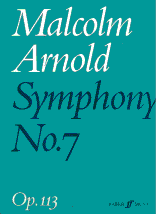The Symphony No. 2: Kleetüden; Variationen für Orchester nach Paul Klee (Variations for Orchestra after Paul Klee) by Jason Wright Wingate was completed in 2009 and consists of 27 movements, each depicting a painting or drawing by Paul Klee. In form, the movements are also variations on a musical theme based on the letters of the artist's name, each taking its title from the Klee work referenced. [1]

Jason Wright Wingate is an American composer, cellist and poet based in New York City. Notable works include the chamber work Landscapes of Consciousness, and the Symphony No. 2: Kleetüden; Variationen für Orchester nach Paul Klee , as well as a transcription of Modest Mussorgsky's Pictures at an Exhibition for orchestra, chorus and organ.
A movement is a self-contained part of a musical composition or musical form. While individual or selected movements from a composition are sometimes performed separately, a performance of the complete work requires all the movements to be performed in succession. A movement is a section, "a major structural unit perceived as the result of the coincidence of relatively large numbers of structural phenomena".
A unit of a larger work that may stand by itself as a complete composition. Such divisions are usually self-contained. Most often the sequence of movements is arranged fast-slow-fast or in some other order that provides contrast.

Paul Klee was a Swiss German artist. His highly individual style was influenced by movements in art that included Expressionism, Cubism, and Surrealism. Klee was a natural draftsman who experimented with and eventually deeply explored color theory, writing about it extensively; his lectures Writings on Form and Design Theory, published in English as the Paul Klee Notebooks, are held to be as important for modern art as Leonardo da Vinci's A Treatise on Painting for the Renaissance. He and his colleague, Russian painter Wassily Kandinsky, both taught at the Bauhaus school of art, design and architecture. His works reflect his dry humor and his sometimes childlike perspective, his personal moods and beliefs, and his musicality.
The Symphony's movements, with English translation of titles followed by tempo markings, are as follows: [1]
In musical terminology, tempo is the speed or pace of a given piece. In classical music, tempo is typically indicated with an instruction at the start of a piece and is usually measured in beats per minute. In modern classical compositions, a "metronome mark" in beats per minute may supplement or replace the normal tempo marking, while in modern genres like electronic dance music, tempo will typically simply be stated in bpm.
- Bewegung der Gewölbe ("Movement of the Vaulted Chambers") - Andante gotico
- Furcht vor Verdoppelung ("Fear of Becoming Double") - Vivace misurato
- Eros ("Eros") - Grave libidinoso
- Die Zwitschermaschine ("The Twittering Machine") - Allegro meccanico
- Gelehrter ("Scholar") - Lento con moto
- Flucht vor sich [erstes Stadium] ("Flight from Oneself [First State]") - Prestissimo
- Einsiedelei ("Hermitage") - Larghetto introspettivo
- Der Tod für die Idee ("Death for an Idea") - Vivace portentoso
- Zwillinge ("Twins") - Allegro compiaciuto
- Seltsamer Garten ("Strange Garden") - Largo germogliare
- Rechnender Greis ("Old Man Counting") - Andante calcolazione
- Fatales Fagott Solo ("Fatal Bassoon Solo") - Allegretto sinistro
- Uhrpflanzen ("Clock-plants") - Adagietto cronologico
- Fuge in Rot ("Fugue in Red") - Moderato rossastro
- Regen ("Rain") - Allegretto spruzzatina
- Paukenspieler ("Kettledrummer") - Grave morboso
- Ein Stückchen Eden ("A Fragment of Eden") - Andantino innocente
- Mit den beiden Verirrten ("With the Two Lost Ones") - Lento ansioso
- Leidende Frucht ("Suffering Fruit") - Lento antropomorfismo
- Ausgang der Menagerie ("Outing of the Menagerie") - Vivace zoologico
- Mädchen in Trauer ("Girl in Mourning") - Andante addolorato
- Schwarzer Fürst ("Black Prince") - Allegro bellicoso
- Gestirne über dem Tempel ("The Firmament Above the Temple") - Larghissimo contemplativo
- Katze und Vogel ("Cat and Bird") - Andantino desideroso
- Anatomie der Aphrodite ("Anatomy of Aphrodite") - Allegretto cubista
- Die Schlangengöttin und ihr Feind ("The Snake Goddess and Her Foe") - Con moto mitologico
- Ad Parnassum ("To Parnassus") - Allegro trascendente


